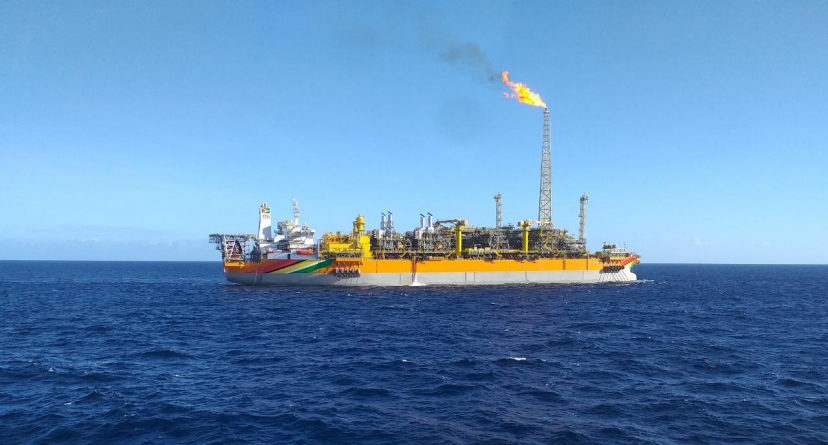ExxonMobil ramped up flaring in October
Despite sustained opposition to ExxonMobil’s flaring, the company ramped up the release of toxic gas into Guyana’s atmosphere in October, by increasing production at its Liza Phase One operations.
Information supplied by Head of the Environmental Protection Agency (EPA), Sharifah Razack, indicates that the company flared 16.496 million standard cubic feet of gas per day – up from its previously publicized rate of 15 million cubic feet per day.
This information is consistent with statements made by Hess’ representatives during its 2020 third quarter earnings call. The Stabroek block co-venturer had indicated at the end of October that it was happy to inform its shareholders that production rates at Liza Phase One have increased to 105,000 barrels of oil per day in the past few weeks.
Before that, public knowledge was that Exxon’s production was hovering around 80,000 to 90,000 barrels of oil per day, as was the case in September.

In September, Kaieteur News had reported that Guyana stands at number six in the world per capita for countries emitting toxic gas by flaring. The newspaper had projected that with the rate of flaring at the time, Exxon would have emitted 12 billion cubic feet by the end of 2020.
However, since the rate of flaring increased in October, the volume flared at the end of the year will be much higher. Exxon will have flared more than 12 billion cubic feet of gas in a matter of days.
The most recent report to the EPA noted that as of November 4, ExxonMobil had flared 11.908 billion standard cubic feet of gas, and that the volume of gas injected at the Liza Phase One operation was 9.225 billion standard cubic feet of gas.
The EPA provided that as of October 31, the rate of flaring has been reduced to 14.924 million standard cubic feet of gas – about the same rate of flaring as in July.
Exxon has been flaring since last December, and has blamed it on defective equipment.
According to the EPA brief, ExxonMobil said that it started up the 2nd main gas compressor in October, and operated it along with the main gas compressor and the injection gas compressor. The EPA’s report said that oil production had been limited to approximately 95,000 barrels per day, “to achieve more than 85% gas re-injection into the reservoir or consumption in operations.”
The third stage flash gas compressor and suction silencer have been repaired in Germany and were returned to the Liza Destiny Floating Production, Storage and Offloading Vessel (FPSO) a week and a half ago. It is being reinstalled, and is expected to restart in mid-November. Exxon expects the equipment to take one to two weeks of testing to confirm that the repairs and modifications worked.
This graph was produced by Kaieteur News in September. Exxon’s increased flaring in October moves Guyana much closer to being one of the highest flaring countries per capita in 2020.






















